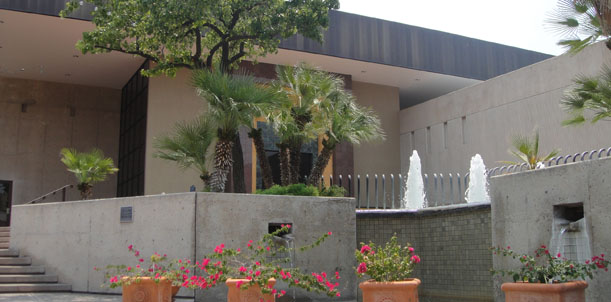My Dad often told me, “You’ve got a good Scots tongue in your head,” and that turned out to be lucky for me at the Tucson Museum of Art.
Had I not been willing to ask directions — numerous times — I might have missed out on some fine art-viewing.
The problem begins with the street address shown on the museum website and on Google maps: 140 North Main Avenue. So intent were we on finding 140 North Main that we walked right past the “East Entry Plaza” on W. Alameda St. that leads to the main entrance of the museum.
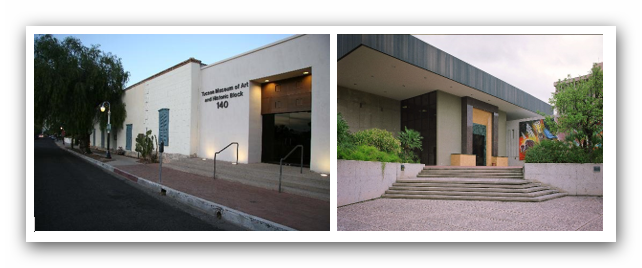
The doorway at 140 North Main opens into to a quaint, historic house — part of the “historic block” of five old properties — where one encounters a ticket seller (who I initially took to be a security guard), a multi-room gift shop, and two small gallery spaces. Although I had a floor plan pamphlet in hand, I had to ask where to go from there.
Across the open courtyard, a lucky guess as to which door was the right one got us into what felt like the lobby of an office building. Wandering, wondering, brought a man to our rescue from across the space, guiding us to the entrance to the “museum galleries.” Subsequent study of the teeny-tiny, where-are-my-glasses floor plan indicated that we had indeed found the “Main Lobby” off the “East Entry Plaza.”
My next visit will be a piece of cake! And now I’ve got that off my chest, we can get on with the good stuff …
From the 140 North Main entry, the first two small galleries we came to made an auspicious beginning, since my companions and I are all fans of the art of the American West. Favorites were two landscapes, by Kenneth Riley and Duane Bryers.
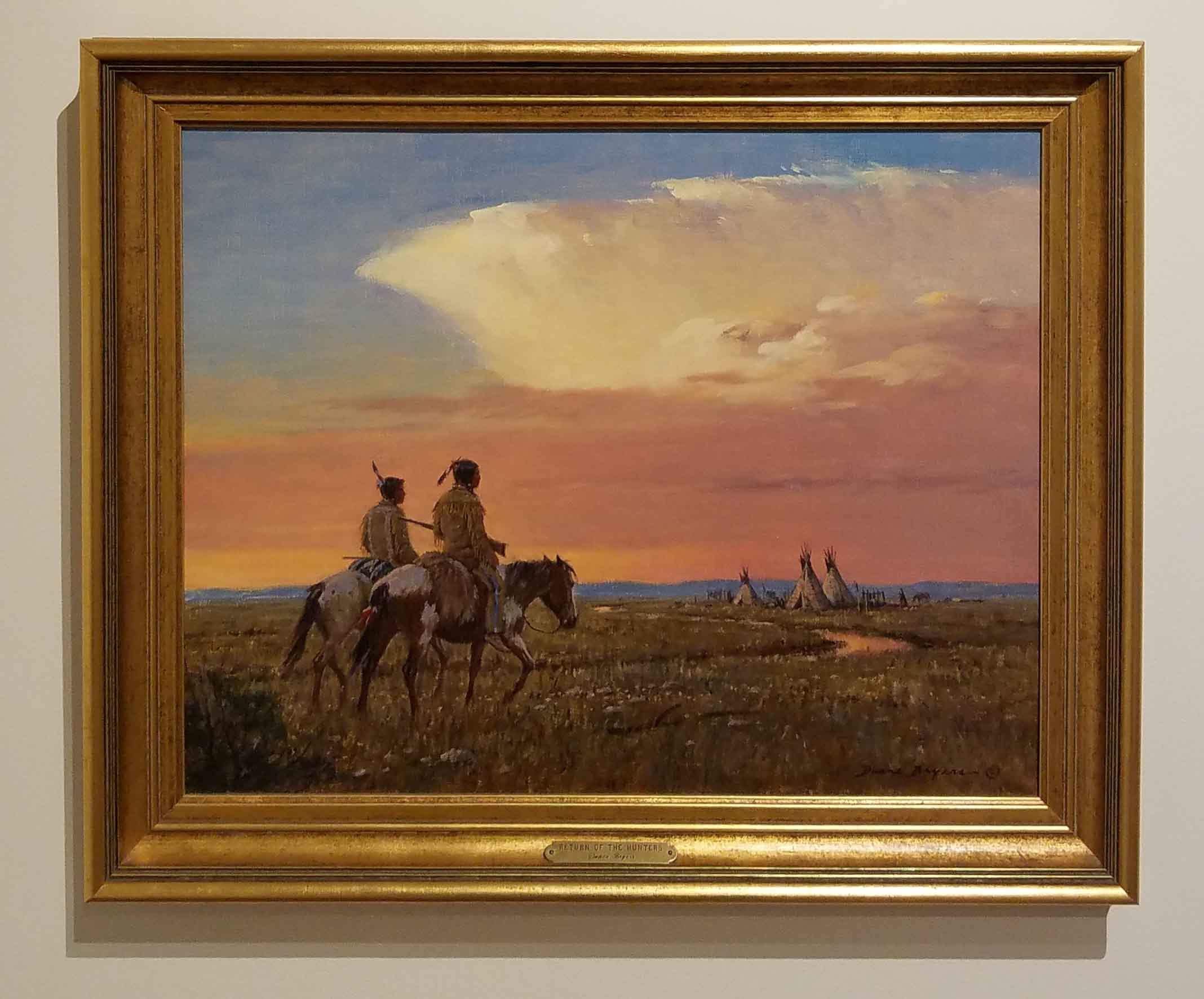
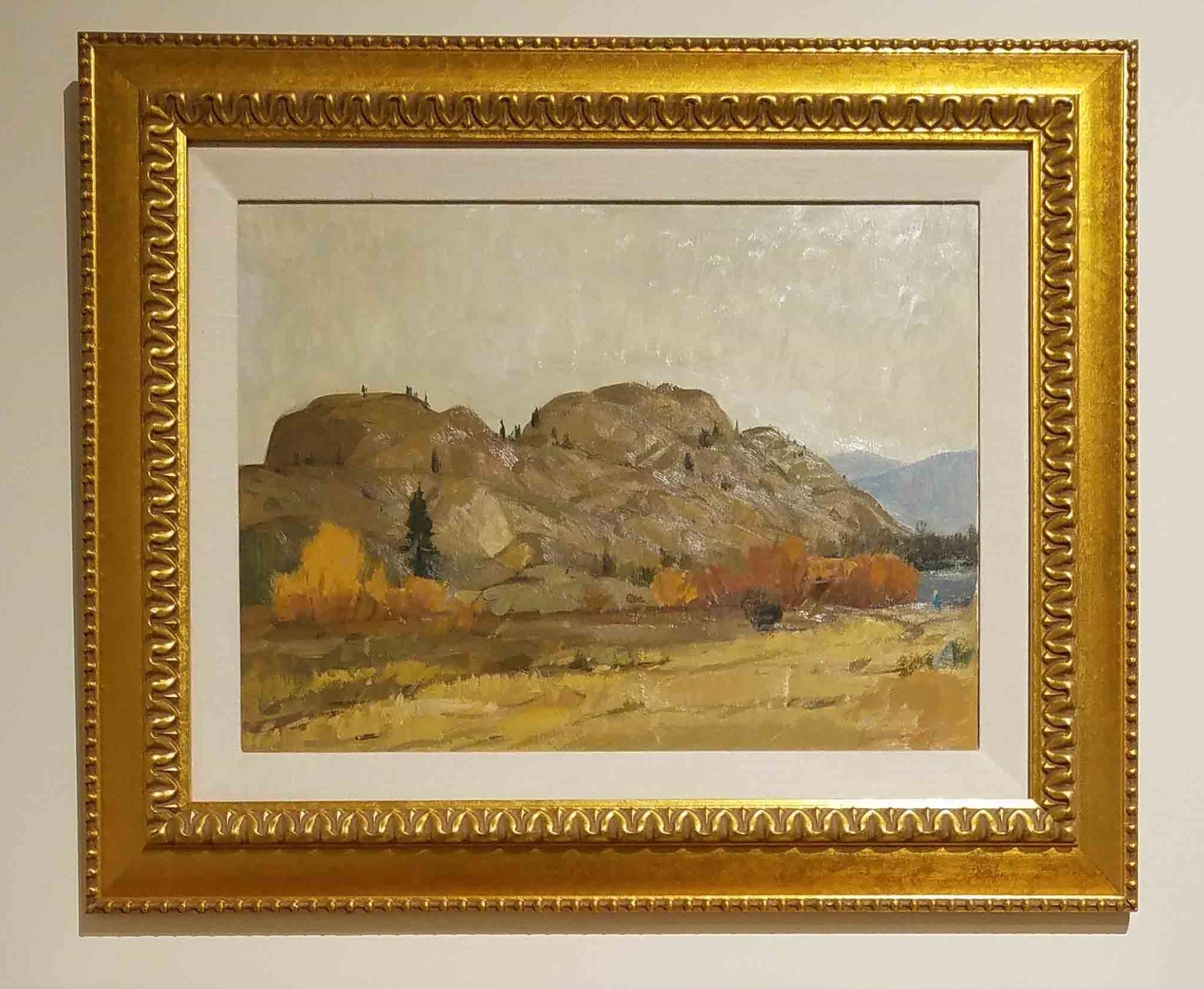
acrylic on canvas
and a couple of contemporary pastel portraits by Harley Brown …
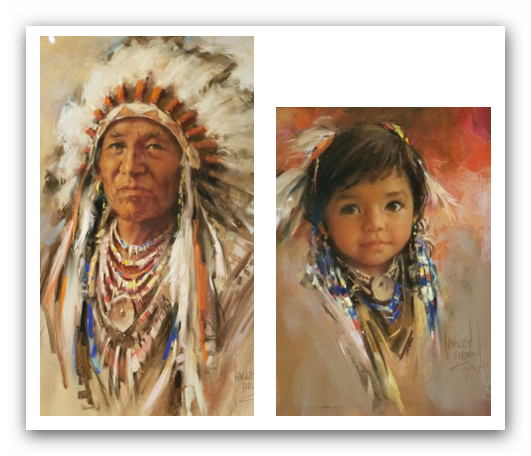
Harley Brown, Little Sister, 2014, pastel
Having whet our appetite for art, we decided to acquiesce to our appetite for lunch at the museum’s Café a la C’Art. Located in the adjacent 1865 Stevens House, and listed as one of the top ten museum restaurants in the U.S. by Food & Wine Magazine, it offers varied choices, friendly service and a casually classic atmosphere. A lovely respite, even though stormy weather forced us to forego the patio.
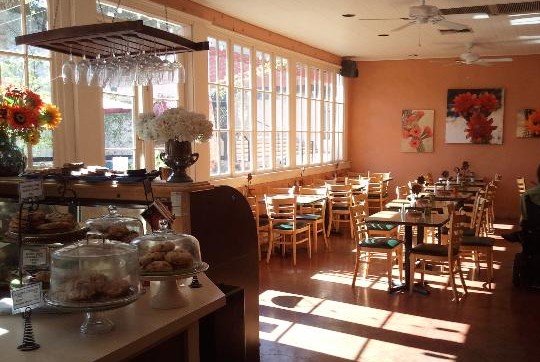
Once we found our way into the “Museum Galleries”, we were presented with two special exhibitions, one of which has since closed. The other, Dress Matters: Clothing as Metaphor (on through Feb 14), examines clothing in art as symbolic of power and identity, with works by more than 50 well-known and lesser-known artists.
A standout for me in this show was a Nick Cave Soundsuit (2016). I’ve heard about Cave’s Soundsuits so often, but this was my first opportunity to actually see one. If you need a raison d’être, you might see it as a whimsical vehicle for intricate sequined surface detail.
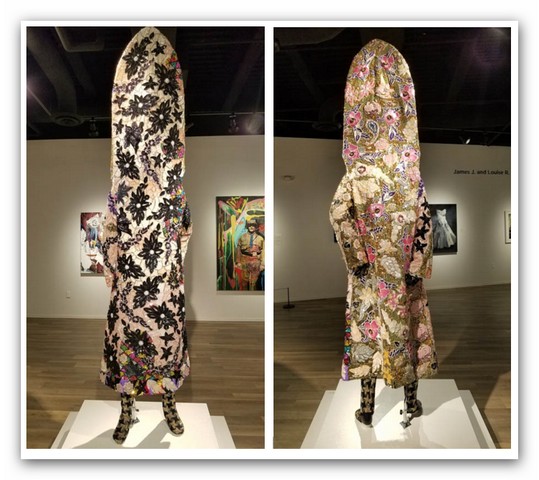
Front view / Rear view. On loan from Rubell Family Collection, Miami FL
From the Special exhibition space, a ramp leads down to a lower level, where selections from the permanent collection of more than 8000 objects are displayed. There’s a little bit of lots of different types of art, including Latin American folk art, photography, works on paper, Asian, European, modern, and contemporary art.
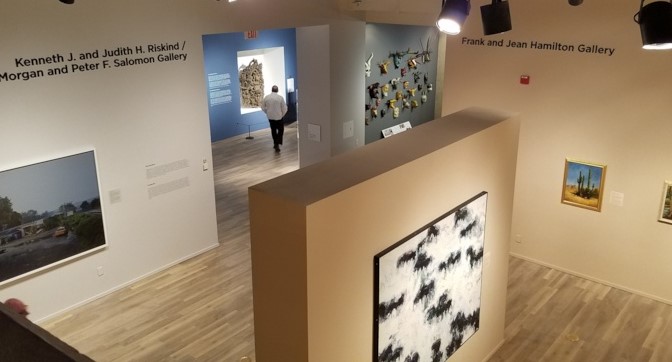
Among the appealing works in the collection — providing a sense of the range of work in the museum’s holdings — was an unusual (to me) Andy Warhol screenprint,
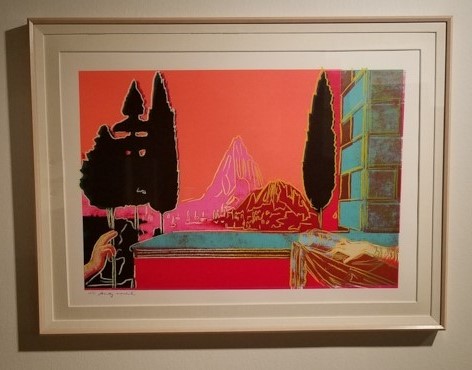
and an intricate bibilical narrative plaque produced in clay by Tiburcio Soteno Fernández (b. 1952, Metepec, Mexico). Fernández was taught to work in clay by his mother, Modesta Fernández, who is known for beautiful utilitarian pottery. In turn, he has taught his sons to work in clay, passing the tradition on to the next generation of artisans.
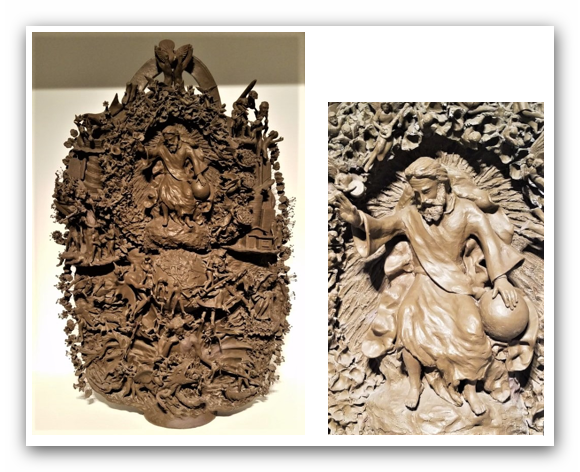
In another Western-themed image, it was the play of light and shadow in this watercolor by William Matthews (b.1949) that captured my attention. Matthews is known for his paintings of everyday moments in cowboy life.
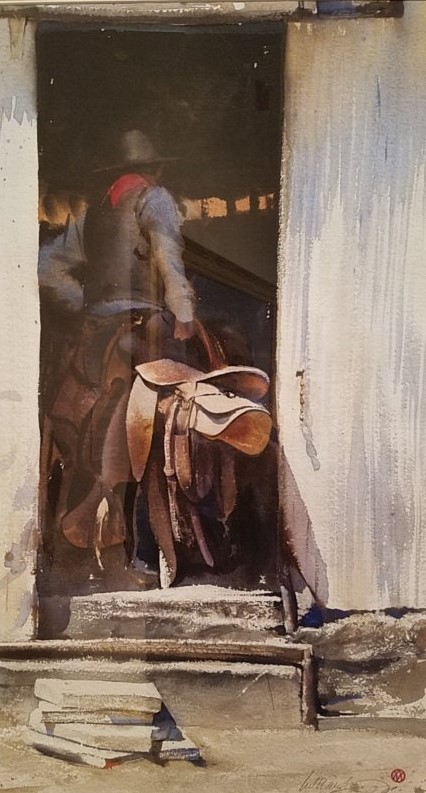
I was particularly taken with a gracious, small Rodin sculpture, Jeune mère à la grotte / Young Mother in a Grotto, c. 1885. Rodin’s work is ubiquitous — especially recently, in recognition of the centennial of his death — and we’ve been seeing studies and casts of his magnificent, famous bronzes. But this piece was new to me, fresh and tender, carved in white marble, and evidencing Rodin’s traditional training and craftsmanship.
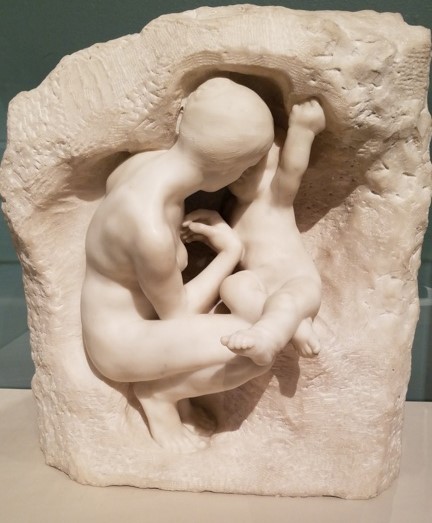
Finally, it’s always a treat to discover new names, artists whose work captures my interest. The top candidate in this category for me was landscape artist, Merrill Mahaffey, whose monumental Rockfellow, 2002 stopped me in my tracks.
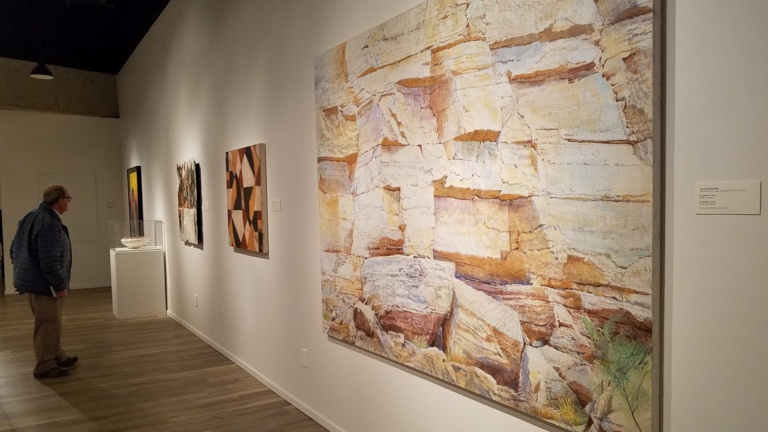
Despite my griping about the non-intuitive layout of the facility, our visit to the Tucson Museum of Art rewarded us with a lovely lunch and some very pleasurable art-viewing. For good reason did True West magazine include the Tucson Museum of Art on its 2015 list of Top Western Art Museums in the United States.
Tucson Museum of Art
140 North Main Ave, Tucson, AZ
520-624-2333
ADMISSION
Adults: $12Adults / Adults 65+: $10
College Students & ages 13-17: $7
12 & under and Veterans + Active Military Personnel: Free
HOURS
Mondays: Closed
Tuesday – Sunday: 10 AM– 5 PMFirst Thursday of Each Month: 10 AM– 8 PM Closed on major holidays
It’s always a good idea to call to verify this information
